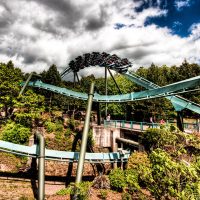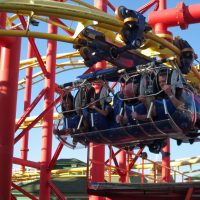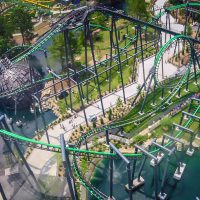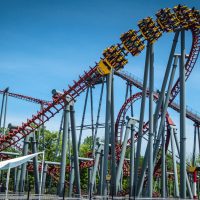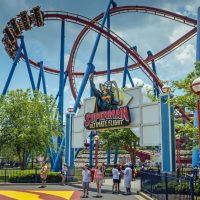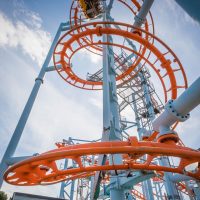a.k.a Flying Coaster, Prone Coaster, Lay-Down Coaster, Flying Dutchman
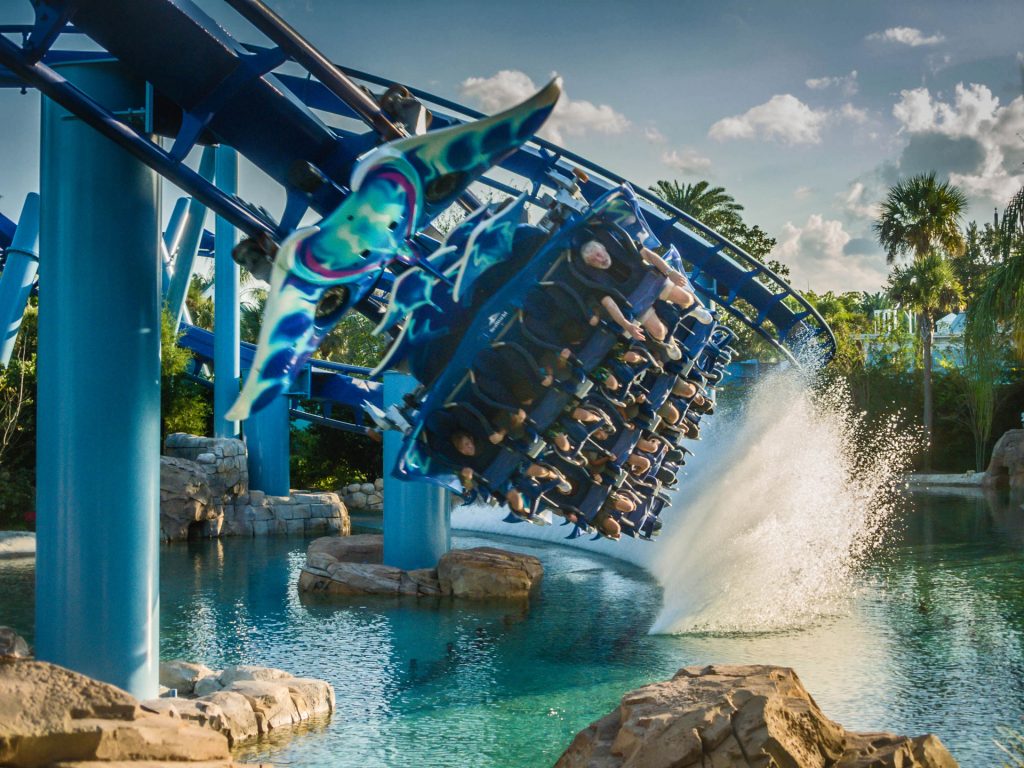
Vekoma, a company formerly known for their cheap selection of rides and/or cheaper knockoffs of trends (such as the SLC with the inverted coaster trend), took the helm of innovation with their Flying Dutchman coaster, the first coaster to give riders a true sense of flight by lying them down on their backs and flipping them into the prone position and back again at certain points in the ride. Since then, two companies have produced flying coasters – B&M, who’s “true” flyer is considered the best version available today, and Zamperla, who’s cheap and somewhat painful version is to Flying coasters what the SLC is to inverted coasters.
The Original
VEKOMA FLYING DUTCHMAN

The first flying coaster was made by Vekoma, and while technically a flying coaster, it’s considered more of a lay-down coaster with flying segments. Riders are loaded into the cars facing backwards, and before dispatch, the seats are tilted backwards (see picture) into the lay-down position. At the top of the lift hill, the trains performed a lie-to-fly element built into a 180° turn, flipping them into the flying position. Three such rides were built, the latter two (Firehawk at Kings Island in Ohio and Batwing at Six Flags America in Maryland) replacing the final two corkscrews with inline-twists.
Examples:
Batwing at Six Flags America, USA
Firehawk at Kings Island, USA
Nighthawk at Carowinds, USA
Variations
B&M FLYING COASTER
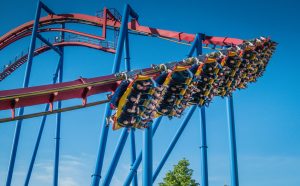
Considered the first “true” flying coaster (due to the loading process in which the trains leave the station in the flying position, unlike the lay-down position of the Vekoma Flying Dutchman series), the first Bollinger & Milliard Flying Coaster was the result of a collaboration between John Wardley and B&M, who had worked together designing the flying coaster since Nemesis at Alton Towers in the UK was completed in 1993. When Air was finally under construction at the same park, B&M sold a different version (soon to become the standard version with further copies being built in the years to follow) to Six Flags, which quickly went up at Six Flags Over Georgia – the American park nearly took the title of first Flying Coaster from Alton Towers, the park who had helped develop it!
Examples:
Tatsu at Six Flags Magic Mountain, USA
Manta at SeaWorld Orlando, USA
Air at Alton Towers, UK
Superman Ultimate Flight at Six Flags Over Georgia, USA
ZAMPERLA VOLARE
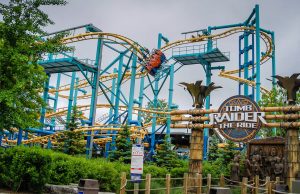
A much less technically impressive flying coaster was made by Zamperla, as a compact fairground coaster. Their Volare combines flying coasters with wild-mouse style layouts, offering constant turns and small dips with single-car trains. The Zamperla version offers the potential for a small park, without money for a Vekoma or B&M flyer, to purchase a coaster of this style.
Examples:
Trombi at Särkänniemi Amusement Park, Finland
Soarin’ Eagle at Scream Zone, USA
Time Warp at Canada’s Wonderland
Super Flight at Rye’s Playland Park, USA
